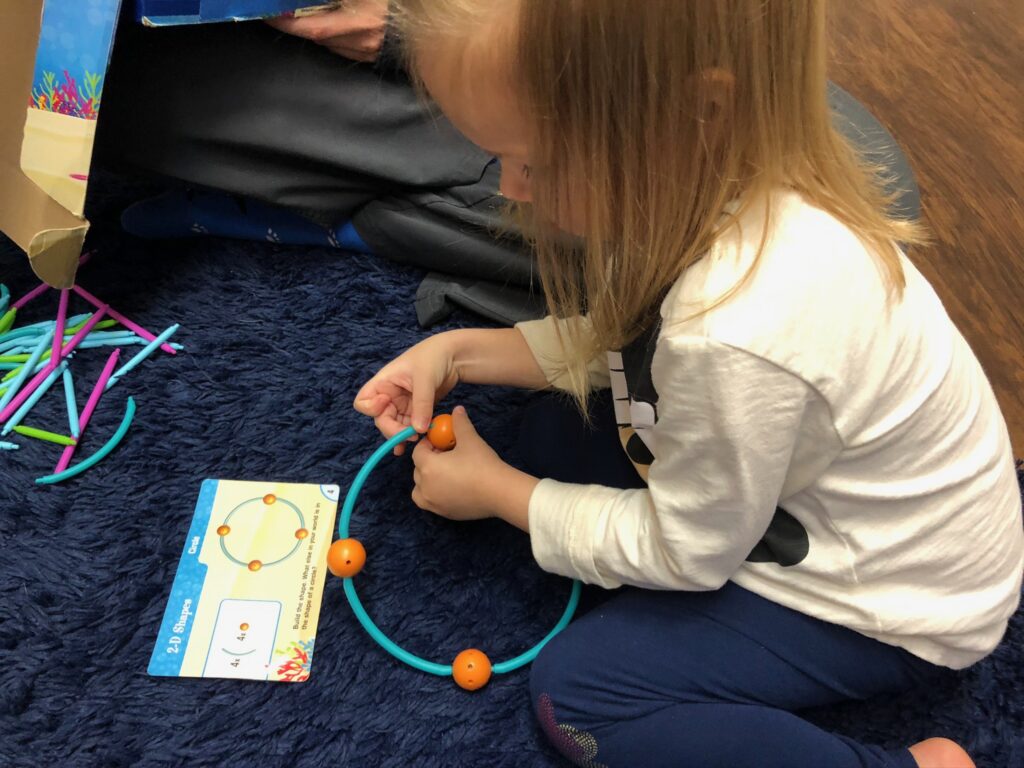Vision versus Eye Sight:
At MPPT we have therapists trained in ocular motor skills. They have worked with developmental Optometrist and are highly skilled in addressing every day challenges for your child!
It is common to hear “20/20 vision is perfect vision”, however, our skilled occupational therapists are well aware of the complexities that involve your child’s visual abilities. Vision is the emergent of multiple skill sets working together.
The 4 Circles of Vision:
- Centering: Where is it?
- Identification: What is it?
- Antigravity: Where am I? Where are my body parts one relative to another?
- Speech auditory: What does it look like? What can I tell you about it?
Important visual terms and skills to consider when looking at your child’s visual success:
Visual Acuity:
Purpose-to determine how clearly each eye can see the distance and close up.
Behaviors that indicate difficulty with visual acuity in early development are lack of attention and lack of exploration. In later development, activity may be limited to a specific area of space or poor social interaction.
Binocularity:
Purpose- to determine the status of eye alignment and how well the eyes are working together as a team. The ability to use both eyes as a “team,” or a single functioning pair, is what allows our brain to fuse the two separate pictures coming in from each eye into a single image with depth perception.
Teaming depends on the eyes alignment and your OT can detect the presence of phoria (a tendency for an eye to drift out of alignment) or strabismus (an eye out of alignment). An OT will also detect difficulty with convergence and divergence. This is your eyes ability to turn eyes inward and outward when looking at objects close up with smooth movement.
When the eyes do not work as a team, the brain often “turns off” or shuts down one eye to allow the one seeing eye to do all activity. This requires increased energy output, and can also cause children to avoid one eye being covered, poor success in ball sports, poor depth awareness, and avoiding heights or climbing activities. Teaming difficulties or problems can be misidentified as attention difficulties as the child stops to read prior to headaches or double vision occurring. Fatigue will be immediate with tasks that require teaming.
Ocular motility:
There are three basic types of eye movements:
- Fixations: ability to hold eyes steady without moving off target
- Saccades: the ability of our eyes to make accurate jumps as we change targets
- Pursuits: the ability of our eyes to follow a moving targets
Fixation is the most basic eye movement skill from which other skills grow. Good fixation skills allow us to maintain a steady gaze without our eyes moving involuntarily off target. Without the ability to fixate, images will be blurry and confusing. In school, comprehension suffers as our eyes involuntarily move off the print and words jumble or jump around. Without this foundational skill, it is difficult for a child to develop their ocular motor skills fully!
Saccades are eye jumps–the sudden, quick voluntary change in fixation from one object to another. Saccades involve any shift in gaze, such as from road sign to speedometer, board to paper, and notes to computer screen. During reading, accurate saccadic movements are critical. The eyes must move left to right along a straight line without deviating up or down to the lines above or below. In addition, when we reach the end of a line, our eyes must make a difficult reverse sweep back to the beginning of the next line. If a child cannot control these eye movements, he’ll lose his place and comprehension becomes a problem. The ability to make accurate saccades involves a very precise coordination between our central and peripheral visual systems. Our central vision processes what we’re looking at in clear detail and defines what we’re seeing (“What is it?”) while our peripheral vision simultaneously locates the next target to let us know where to aim our eyes during the next saccade (“Where is it?”). If there is not a continuous, fluid, simultaneous integration between the two systems, saccadic eye movements will be poor.
Pursuit eye movements are especially important in driving and sports. Pursuit eye movements are used to follow a moving target. Accurate, smooth pursuit eye movements allow us to make spatial judgments as to the speed and position of the moving target. We observe the ability to complete smooth pursuit eye movement in vertical and horizontal planes. Difficulties in this area can limit hand-eye coordination development. It will also affect a child’s endurance and ability to successfully complete note taking from a board during class. Increased fatigue noted through rubbing of eyes or twitching is common when difficulties are present.

